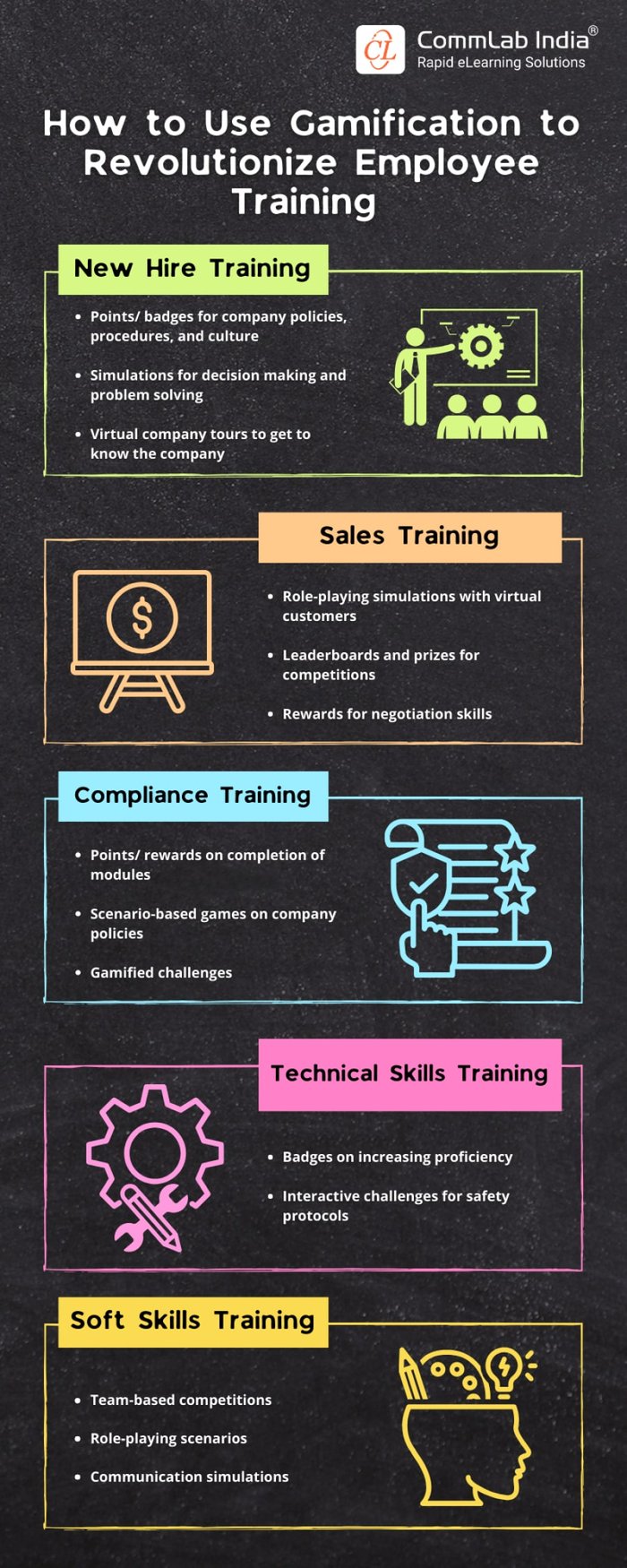How to Use Gamification to Revolutionize Employee Training [Infographic]
![How to Use Gamification to Revolutionize Employee Training [Infographic] How to Use Gamification to Revolutionize Employee Training [Infographic]](https://blog.commlabindia.com/hubfs/blogs/how-gamification-revolutionizes-employee-training-info.jpg)
Modern-day workforce thrives on interactive, engaging learning experiences.
With that said, gone are the days of dry lectures and monotonous slideshows. But what next? To align your corporate training initiatives with the learning styles of new generations, gamification is a must-try. It holds immense potential to transform traditional training into an exciting adventure. From boosting motivation and knowledge retention to fostering healthy competition and a culture of continuous learning, incorporating game design elements into your training programs can unlock a world of benefits.
In this blog, we’ll take a detailed look at the concept of gamification and learn about what makes gamification so effective. Next, we’ll understand the elements of gamification and
What is Gamification?
Gamification refers to the strategic application of game-design elements and principles in non-game contexts. This involves incorporating mechanics like points, badges, leaderboards, and progress indicators to enhance user engagement and motivation.
The objective of gamification is to leverage the inherent appeal and structure of games to foster engagement and desired participation levels among learners to maximize the completion rates and training ROI.
→ Download Now: Instructional Design Strategies to Design Engaging eLearning Courses
Gamification Elements to Design Effective Courses
Now that you understand the power of gamification, let's explore the elements you can use to build engaging and effective training programs:
Points and Badges
Awarding points for completing tasks, passing quizzes, or demonstrating mastery incentivizes participation and provides a visual representation of progress. Moreover, badges act as digital trophies, recognizing achievements and motivating learners to strive for more.
Leaderboards
A touch of friendly competition can go a long way. Leaderboards allow the learners to see how they are progressing in comparison to their peers. This is a great way to spark a healthy competition and motivate learners to climb the ranks by solidifying their knowledge and application.
Challenges and Quests
When you break down your training into a series of gamified challenges or quests themed around your learning objectives, it proves more beneficial and effective. It creates a sense of purpose and accomplishment, turning the learning experience into an interactive adventure.
Interactive Scenarios and Storytelling
Infusing your gamification course with engaging narratives and relatable characters makes learning more immersive and impactful. Storytelling allows learners to connect with the training material. Interactive scenarios help them retain and apply information in a better manner, thereby boosting their decision-making and problem-solving skills.
Levels and Stages
Levels and stages are an integral aspect of designing high-impact gamification as they provide a clear progression path. It keeps learners motivated and allows them to track their overall development. You can structure your training program with defined levels and stages where each level represents the mastery of new challenge and skills.
How to Use Gamification to Revolutionize Employee Training
Wrapping Up!
Gamification holds immense potential for delivering effective corporate training and driving positive change and learning efficiency among learners. It is a compelling approach as it enhances user engagement and motivation across various fields. By strategically integrating game mechanics into non-game contexts, organizations can foster a more enjoyable and interactive experience for the learners, ultimately leading to improved outcomes and desired training ROI. Talking about learner engagement, instructional design strategies play a crucial role too. Learn more in the eBook below.







![6 Benefits of AI-Powered Gamification in Employee Training [Infographic]](https://blog.commlabindia.com/hubfs/blogs/benefits-ai-powered-gamification-employee-training-infographic.jpg)